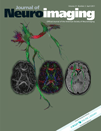High-resolution Diffusion Tensor Imaging for the Detection of Diffusion Abnormalities in the Trigeminal Nerves of Patients with Trigeminal Neuralgia Caused by Neurovascular Compression
Funding source: Grant-in-Aid for Strategic Medical Science Research Center and Grant-in-Aid for Science Research (20591693) from the Ministry of Education, Culture, Sports, Science and Technology of Japan.
Conflict of Interest: None.
J Neuroimaging 2011;21:e102-e108.
Abstract
ABSTRACT
PURPOSE
To detect diffusion abnormalities in the trigeminal nerves of patients with trigeminal neuralgia (TN) caused by neurovascular compression (NVC) by using a high-resolution diffusion tensor imaging (HR-DTI) technique.
METHODS
Thirteen patients with TN and 14 healthy controls underwent HR-DTI scanning. After extracting the trigeminal nerve using a tractography technique, we measured the fractional anisotropy (FA) and apparent diffusion coefficient (ADC), and compared the contralateral ratios (CR) of these parameters between the patients and controls, and correlated these ratios with the cross-sectional areas of the nerves.
RESULTS
The CRs of the FA values for the trigeminal nerves of the patients (1.00 ± 0.15) had significantly higher variance than those of healthy controls (1.00 ± 0.05) (P < .05) and showed a positive correlation with the cross-sectional area of the nerves (r= 0.81). In contrast, the CRs of the ADC values were not significantly different between the two groups (1.02 ± 0.10 and 1.01 ± 0.08, respectively) and had no significant correlation with cross-sectional area.
CONCLUSION
HR-DTI can detect an alteration in the relative FA values of affected trigeminal nerves and a correlation with atrophic changes in patients with NVC-induced TN.




